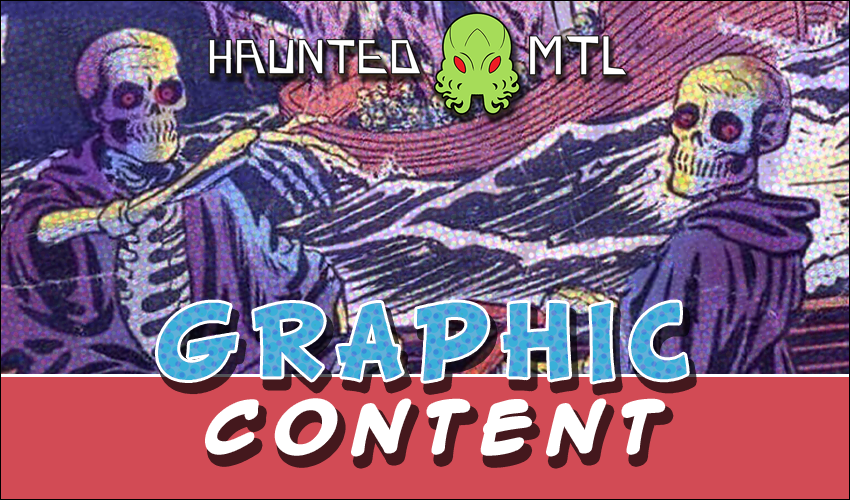
Graphic Content #33: Week of Oct. 3
After a brief aside, we are back with Graphic Content this week. Last time we returned to the pages of the classic 1972 run of Swamp Thing. If you haven’t read my coverage of ol’ Swampy, consider checking out all the stuff I have written about my favorite DC Comics character! However, we now return to a Last Podcast comic and some new books.
We have Sweetie: Candy Vigilante from Dynamite Entertainment and a new Mike Mignola-penned comic, Leonine the Vampyr, from Dark Horse. We also return to the world of Soul Plumber this week, the Last Podcast comic, after I never finished the run over a year ago! Oops!
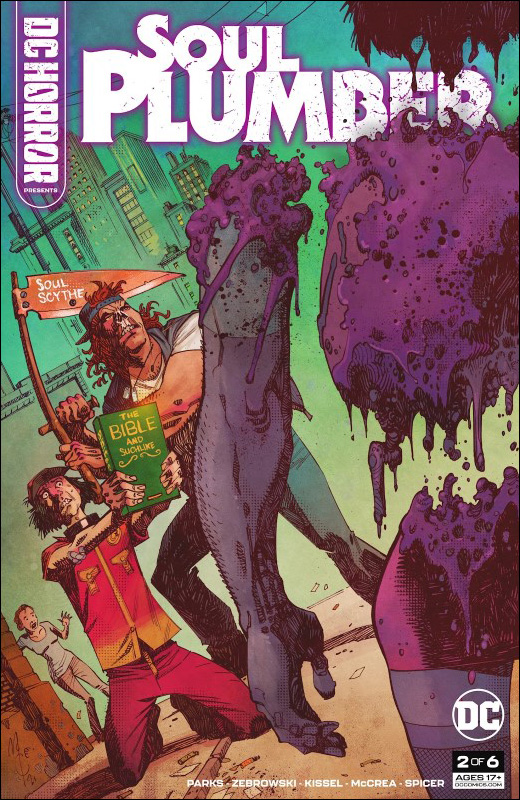
Soul Plumber #2
I read Soul Plumber #1 about a year ago and never had a chance to sit down and read the following issues, so this week’s Graphic Content gives me a chance to catch up, starting with #2. This issue follows up directly with Edgar’s earnest but misguided attempt at soul plumbing on a local man named Scuzz, which goes about as well as you’d expect from the minds of Henry Zebrowski, Marcus Parks, and Ben Kissel. The series is part of the DC Comics horror imprint.
The story is sacrilegious and gross and carries the general aesthetics of projects in the orbit of Last Podcast on the Left and Your Pretty Face is Going to Hell. It is pretty much what the target audience expects. It is quite fun. There is also some fun plot trajectory by the end of the issue as Edgar and Elk seek to clean up a mess, and two forces appear to have an interest in Edgar in particular. I am also intrigued by the entity that is Blorb and its interest in the realm of humans.
The art continues to suit the writing quite well, with fun combinations of gore, vomit, and liquid shit when needed. John McCrea and PJ Holden’s art carries plenty of texture; plus, the grungy colors of Mike Spicer help this version of Indianapolis feel lived in. The mild screen tones add a little more texture here and there.
Overall, the Last Podcast comic delivers what you’d expect.
Impressions of Soul Plumber #2
My impression of Soul Plumber, two issues in now, is that it will be an acquired taste. It probably isn’t for every horror comic fan. The particularly gross-out nature of the supernatural elements is much more tongue-in-cheek than other horror series. I enjoy it, but I am also a fan of Last Podcast on the Left. When it comes down to it, the comic is pretty much for the show’s fans – a true Last Podcast comic. The storytelling isn’t groundbreaking, but it is funny. The art is gross but cool. This is just a fun little ride without rattling the cages of comics too much. We’ll see how much soul is left to plumb in the remaining run.
 (4 / 5)
(4 / 5)
Soul Plumber #2 is written by Marcus Parks, Henry Zebrowski, and Ben Kissel. John McCrea and PJ Holden illustrate the comic. You can find more about the comic from DC Comics or your local comic shop. You can learn more about the Last Podcast comic team at their official website.

Sweetie: Candy Vigilante #1
You have a problem when your issue synopsis says more about your comic than what is said in the comic. To say I was unimpressed by this comic is putting it in the most diplomatic way possible. Sweetie: Candy Vigilante #1 is also based on a character designed for an Osaka Popstar album which seems to be a branding attempt for the band.
The writing annoyed me by spending excessive time in a scene that said nothing, complete with unnecessary and pointless moments of sexual assault and inane dialogue. The story offers nothing that indicates any form of parody, so I found the whole approach by writer Suzanne Cafiero to be more annoying than entertaining.
I am okay with ridiculous violence and shocks for humor, but generally, those are supplemental to a story for me, and nothing here makes me want to read further.
The art is okay, but Jeff Zornow’s style feels inconsistent between panels at key points. There are inconsistencies in figures, faces, and proportion shifts in many characters. Honestly, the art style here evokes the early to mid-2000s for me. It’s not terrible and pretty polished overall, but the style also feels uninspiring. Also, I saw a particularly blatant inconsistency in the dialogue balloons on one panel. How something like that slipped is concerning.
Impressions of Sweetie: Candy Vigilante #1
Sweetie: Candy Vigilante #1 is not the worst comic I’ve ever read, but I am struggling to justify the existence of this non-existent story. The comic seems like an indulgence of a band who came up with a sexy character for a project, but I do not see it being an ongoing thing beyond an arc. Given the issue comes packed in with Osaka Popstar’s take on The Archies’ “Sugar Sugar,” I don’t see this as much beyond a “why not” kind of project.
 (1 / 5)
(1 / 5)
Sweetie: Candy Vigilante #1 is written by Suzanne Cafiero. The comic is illustrated by Jeff Zornow and colored by Antonio Fabella. If you want to know more, you can pick up a copy from Dynamite Entertainment or your local comic shop.
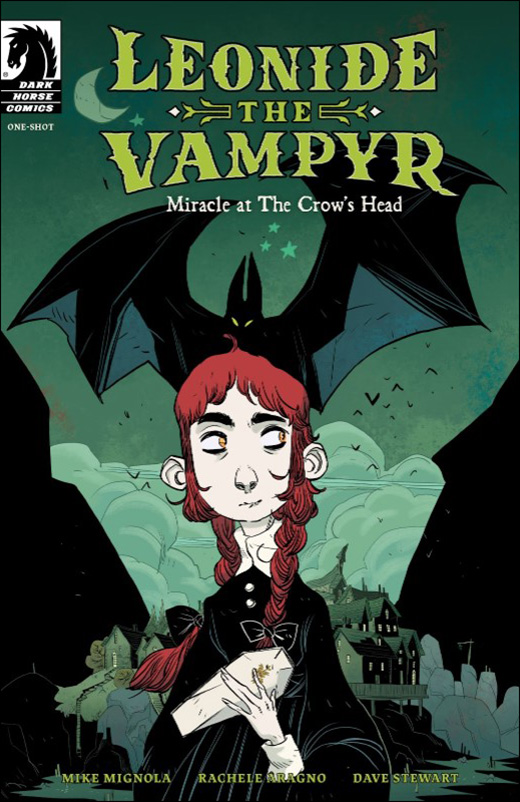
Leonide the Vampyr: Miracle at The Crow’s Head (One-Shot)
Another week, another Mike Mignola release. This time we get a one-shot from the Hellboy creator that evokes classic vampiric fables combined with a more all-ages setting and approach.
Granted, even for all ages, the story is dark and has a sinister air, but it is not overly grotesque or violent. It feels like a traditional, folkloric approach seen so often in Hellboy but also gives a sense of whimsy through the art. I do feel the story itself was a little light, however. I’d have difficulty justifying the single issue’s price of $4. The set-up of an ongoing story is also quite excellent.
One thing I am confused by: The title is listed as a one-shot by the cover, but the first page suggests Leonide’s adventures will be ongoing. Will there be a series of single self-contained issues? The issue implies as much.
Rachele Aragno’s art is lovely here, finding a fantastic blend between the heavy shadows identified with Mignola’s own work but cartoony enough to work for the book’s tone. The character designs are pleasing, and the character of Leonide is quite striking in appearance. The story was a pleasure to read and to look at.
Leonide the Vampyr: Miracle at The Crow’s Head Impressions
Leonide the Vampyr looks as though it could be a good, ongoing series to introduce a younger set to creepy comics. It’s nice to have a comic that can provide a genuinely chilling effect but not be overly beholden to shock and gore. I think the price is a bit steep given the limited story, but a collected series seems like it would make an excellent library staple for the horror-curious kids out there.
I am eager to see what is next, but I certainly hope the ratio of story to price is better.
 (4 / 5)
(4 / 5)
Leonide the Vampyr: Miracle at The Crow’s Head is written by Mike Mignola with art by Rachele Aragno and colors by Dave Stewart. If you want to know more, you can pick up a copy from Dark Horse Comics or your local comic shop.
What do you think about this week’s assembled comics? I think my winner for the week would be Soul Plumber #2, but what about you? Does this Last Podcast comic strike your fancy?
Horror in graphic novels
Read Hide if you need a dark graphic novel to talk about over Thanksgiving
Thanksgiving is coming up this week if you live in America. And many of us are going to be in contact with younger relatives. And some of you might be on a mission to be the cool/bad influence relative that introduces them to the horror genre. If so, I have just the graphic novel for you.
Published in September of 2023, Hide is based on the novel of the same name by Kiersten White. It was adapted into a graphic novel by Scott Peterson, and illustrated by Veronica and Andy Fish. It tells the story of fourteen people who believe they are in a reality show, playing Hide and Seek in an abandoned theme park. It should surprise absolutely no one to find out that the creators of the show have something much darker in mind.
The story
Our main character is Mack. She’s had about the worst rough start to life one could imagine and is currently living in a homeless shelter. There, she’s given the opportunity to participate in a game show, playing hide-and-seek.
I like to think that if the shelter manager had known of Mack’s horrific past, she wouldn’t have ever made that suggestion.

Mack signs up and soon finds herself in an abandoned amusement park with thirteen strangers. The rules are simple. Hide during the day, and be the last person found. Of course, this is nothing but a lie. There will be no winners, only victims.
What works
The first thing we have to talk about is how Hide the graphic novel compares to Hide, the original book. Of course, there wasn’t going to be enough room for every single part of the story. There were some cuts. But it doesn’t feel like anything essential was cut here. The characters remain the same. The storyline is still there, sans any structural issues. Often, this is a difficult thing to do. Some stories don’t translate from one medium to another. But Peterson did a wonderful job.
Of course, we can’t talk about a graphic novel without talking about the art. And the art in this book is fantastic. The colors are rich and vibrant. Everything looks exactly like one might picture it when reading the novel.
Except for the monster, which I have to admit I pictured more like a Rat Creature from Bone.
My favorite part was the journal entries. I loved the cryptic sigils that are scribbled over the page without explanation. I loved the different handwriting. I loved the clippings of newspapers and pictures. The whole thing was just wonderfully, eerily, immersive.
Finally, I want to point out that Hide is a great graphic novel even if you’ve never read the book, and never intend to. This is not a companion for the book. It tells the story all on its own. And yes, reading a graphic novel is just as valid as reading any other novel. This is just a good story, with good artwork. No other reading is necessary.
What didn’t work
There was only one thing I didn’t love about Hide. And that was the ending.
It’s usually the ending.

In the novel, the ending is ambiguous but satisfying. This ending was, without ruining it, a little more ambiguous. There are questions I really wanted answers for that I didn’t get. There is at least one character that I’d like to know about. Are they okay? I don’t know. And this ending doesn’t even really give us a hint. All we can do is hope.
If you are going to be picking this up for a younger person, be aware that there is some rough language. There are also a few graphic scenes of violence, so if that’s the sort of thing that will get you banned from further holiday events, be aware. But if you have a tween or teen who needs to be encouraged to delve into the creepy side, Hide is a great way to do it. Of course, there’s no shame in just reading it yourself.
 (4.5 / 5)
(4.5 / 5)
Book Reviews
Vermis II: Mist & Mirrors, a Book Review
Vermis II: Mist & Mirrors is a graphic novel by Plastiboo, acting as the “official guide for a game that doesn’t exist.”
Vermis II: Mist & Mirrors is a graphic novel by Plastiboo. The team behind the work includes Plastiboo as the artist, Hollow Press as the publisher, Michele Nitri as the editor, Christian Dolz Bayarri as the graphic designer, Marco Cirillo Pedri as the graphic supervisor, and E.R. as the English editor and proofreader. The Vermis collection seems sold out in its current editions, but I still recommend ordering from the original publisher, Hollow Press.
Who stares back from the dark glass? The Wayfarer travels–cursed and haunted by their past–through the distant lands and places within the Mist & Mirrors. Endure a corrupt world and struggle to fend off the curses that mark you. Venture forth, Wayfarer, and perhaps find peace and salvation.
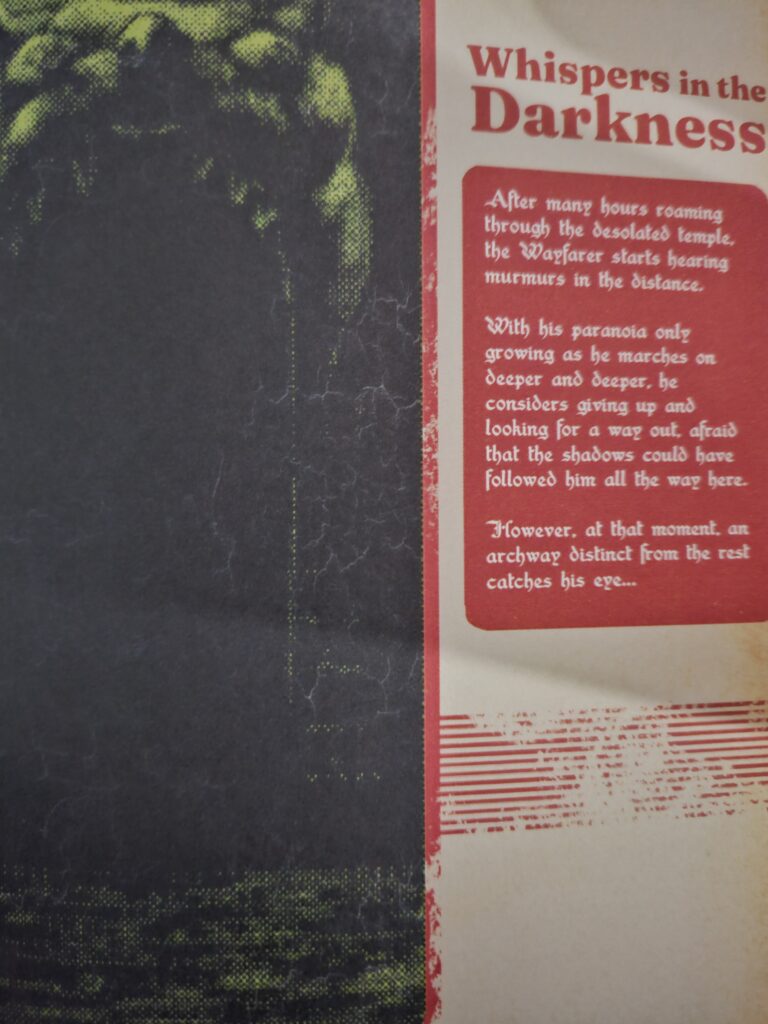
What I Like about Vermis II: Mist & Mirrors
The premise remains an “official guide” to a game that does not exist. However, one key distinction that stands out is the corrosion of this “official guide” mark, suggesting Mist & Mirrors centers itself as a graphic novel. In this sense, it more accurately hits its vision while providing an engaging story.
Mist & Mirrors places its character selection at the end of the graphic novel, instead, choosing a character and allowing the reader to follow that journey. While this moves away from the “official guide” concept, it better fleshes out the world and creates a more independent product.
Where Vermis I held a heavy retro-game aesthetic, Vermis II takes this to the next level while adding a wider range of color than the original. Not only does this add more aesthetic variety, but it also vastly improves readability. My greatest critique of the first graphic novel was the general lack of readability that impacted the experience, but Mist & Mirrors seems to take this to heart. Beyond the variety and improvement, the design changes the color themes to match the distinct lands the “Wayfarer” embarks on, giving a direct purpose to the changes.
On starting the graphic novel, I half expected a spiritual successor set in a new world. While its setting certainly differs from the original, Mist & Mirrors expands on the lore and history. In fact, the exploration of Mist & Mirrors adds value to the original and encourages a re-read. Honestly, that’s what all sequels strive (or should strive) to succeed.
Despite the colorful innovation, Vermis II: Mist & Mirrors delivers that same bleak horror popularized by Dark Souls. It still wears its inspirations on its sleeves while better communicating its “game mechanics.”

Tired Tropes and Triggers
Again, there aren’t many points worth mentioning regarding tropes or triggers. As the graphic novel takes themes and trends from the Soulslike genre, it’s dark and bleak but not overwhelmingly so.
Payment and delivery (for American audiences) still come with a 15 to 45-day wait period with little room for verification or updates. The process through PayPal remains seamless, and I received the novel within the timeframe, but it’s a consideration.
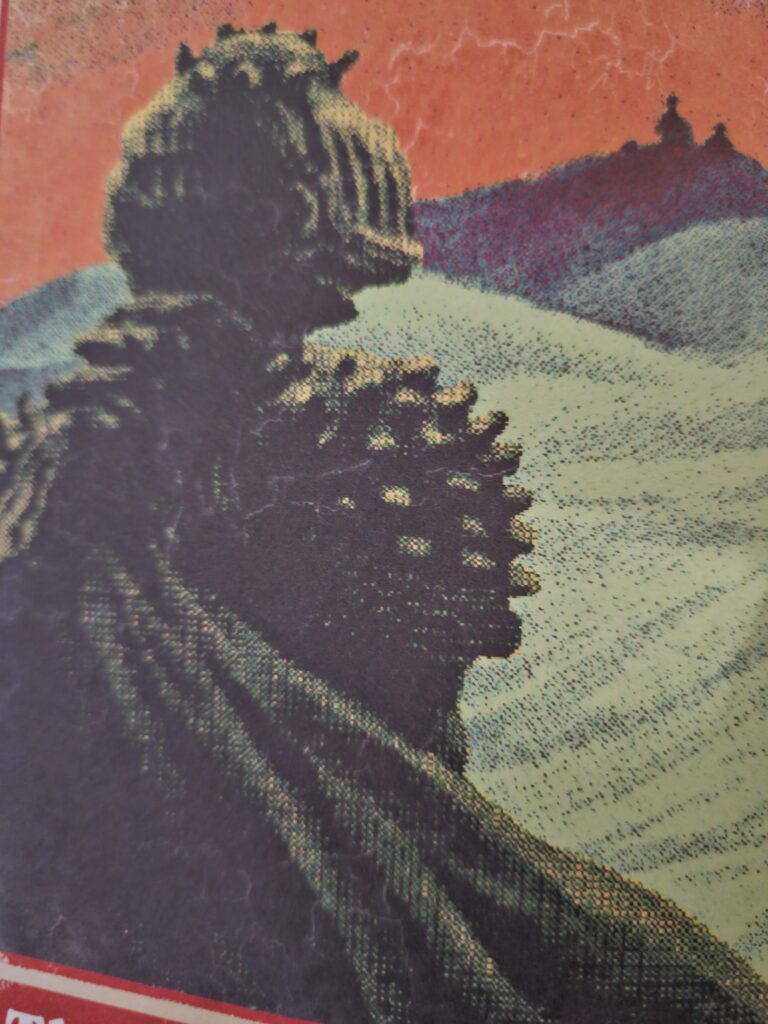
What I Dislike about Vermis II: Mist & Mirrors
While there are notable points to mention in this section, Mist & Mirror vastly mitigates Vermis I’s core issues. However, that isn’t inherently the same as fixing them in some cases. For example, readability remains a slight issue. I will emphasize it as a slight issue with the vast improvements implemented.
For those fans of the specific niche that Vermis aims to deliver, Mist & Mirrors tones down the “official guide” aspect. Instead, it favors a more straightforward narrative that follows a specific character. This brings life to the “game world” and makes an independent product but limits Vermis I’s game guide concept.
On a more personal note, I did enjoy the concept of Vermis I’s classes over the classes of Mist & Mirrors. Naturally, there are some interesting concepts, but nothing haunts me like the Infant Seeker or Rat Man. However, the new choices seem to provide a stronger narrative and backstory.
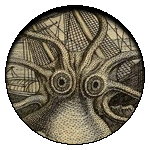
Final Thoughts
Vermis II: Mist & Mirrors vastly improves in many aspects of the original, telling a story set in its bleak and fascinating world. While it does veer from the original concept, it does so to make a more independent product. If you are looking to lose yourself in a strange world or dive deeper into Vermis’ underexplored lore, Mist & Mirrors seems tailor-made for you.
Horror in graphic novels
Bad Dreams in the Night
Published in April of this year, Bad Dreams in The Night is a collection of horror comics by the artist and author Adam Ellis. With the description stating that it is a graphic novel version of Scary Stories to Tell in the Dark, I had to get my hands on it. And it did not disappoint.
The stories
Bad Dreams in the Night consists of eleven short horror stories. I honestly don’t think there’s a bad one in the whole bunch. So let’s just highlight a few.
Easily my favorite story in the book was Little House in the Sea. It’s a sweet, eerie little tale that seems like a pinprick view into a dark and horrifying world. It left me with so many questions that I fear will never have answers. The story is about a young woman and her mother, who live on a little island all alone. The young woman is never to ask about what is on the other side of the sea. Then, her mother dies. And everything changes, but not by a lot.
Green Ribbon was another great story. It’s a retelling of the classic Girl With a Ribbon story from the original Scary Stories book, in which a man is confused and eventually angry that the love of his life wears a ribbon around her neck and won’t tell him why. I liked this updated version. It’s a stark reminder that just because we marry someone, we aren’t owed all of their secrets.

What worked
Of course, the first thing I have to point out about Bad Dreams in the Night is the fantastic artwork. Ellis was a cartoonist first, and it shows.
The artwork is part of the storytelling as well. The best example of this is the story Better Kate Than Never. The younger sister character, Taffy, has such an animated face during the scenes with a ‘studio audience’. When she is just herself, her face is flat, and far more mature than we’d expect for a girl her age.
Though, I suppose based on the story, she might be any age.
Another really enjoyable thing was the mini-essays at the end of each story. As a creator myself, I love the little peeks into the creative process. I know how I come up with stories. But it’s different for everyone, and the story behind the story is often just as fun.
Finally, I have to praise a feature that applies to Ellis’s work overall, not just this book. Whenever he writes scary stories (and he has posted quite a few on his social media) they are a fascinating blend of cute and horrifying. The artwork always has a lovely, innocent, cartoonish look. The children always look like cartoon children, with exaggerated large heads and wide circular eyes.
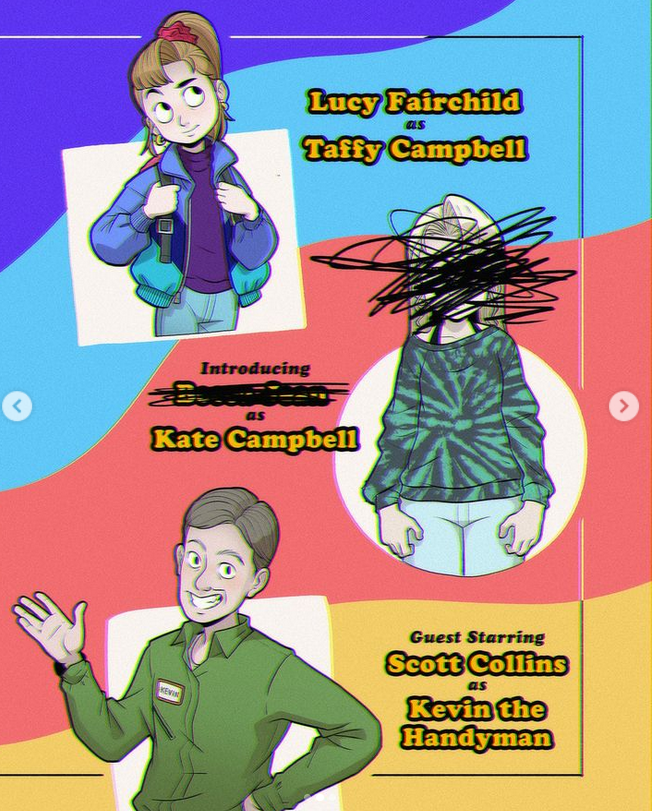
At the same time, Ellis doesn’t pull any punches when it comes to the blood and gore. One story in particular, Milk Door, is a perfect example of this. I don’t want to spoil the ending for you, but it is graphic, horrifying, and wonderful.
What (kind of) didn’t work
I only have one issue with this book. If you follow Ellis on social media, you’ve likely seen at least some of these stories before.
Though, even as I say this, I’m not sure what could have been done about it. Only the beginnings were shown on Instagram. This was a marketing tactic and an effective one. You get the setup for free, but you have to read the book for the punchline.
Bad Dreams in the Night was a really enjoyable way to spend a few hours. In the end, my only real complaint is that it could have been longer. But of course, that is one of the chief rules of entertainment. Always leave people wanting more.
(usr 5)
By the way, if you like this you might enjoy my haunted apartment novella, Quiet Apocalypse. The main character is a modern witch, and I share some real magic in this fictional story of an unexpected end of the world.




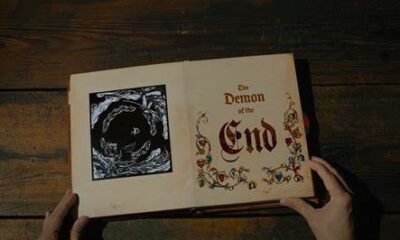

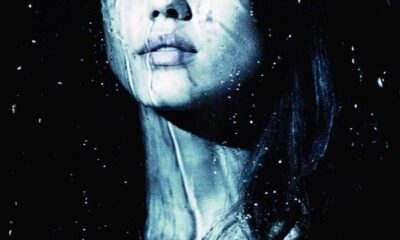





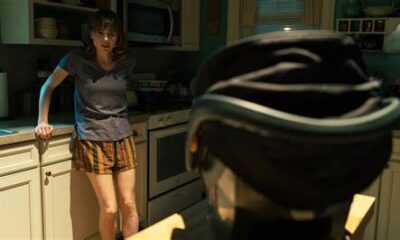

Pingback: Revenge of Graphic Content: Introduction - David's Writing Hub